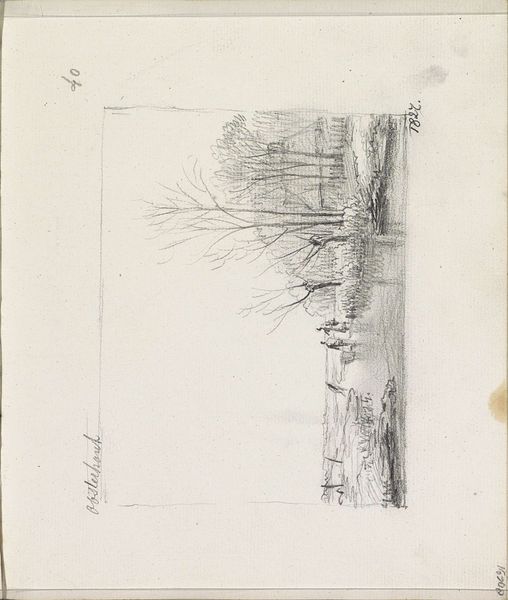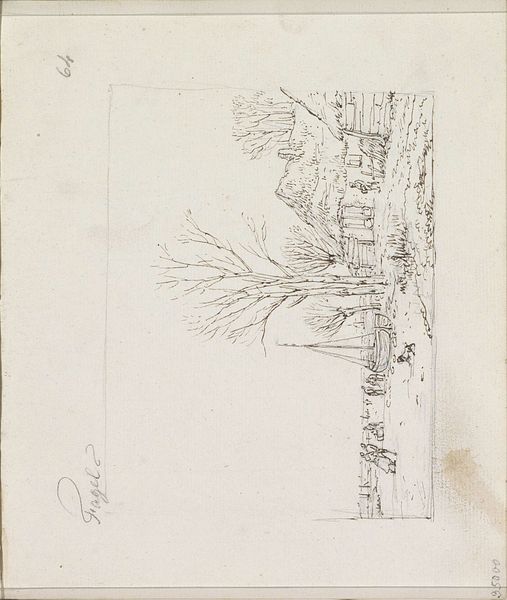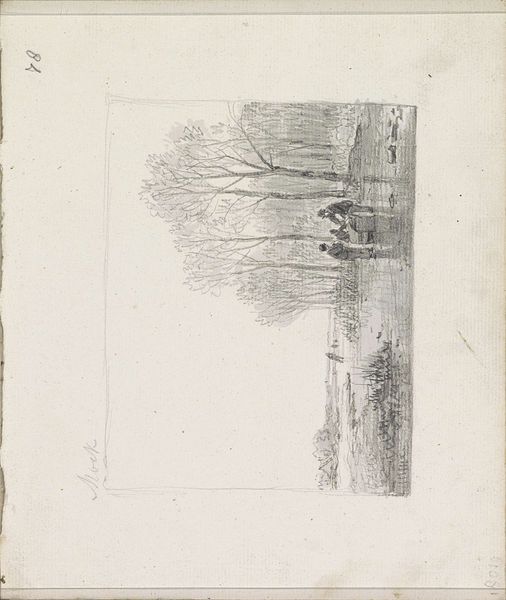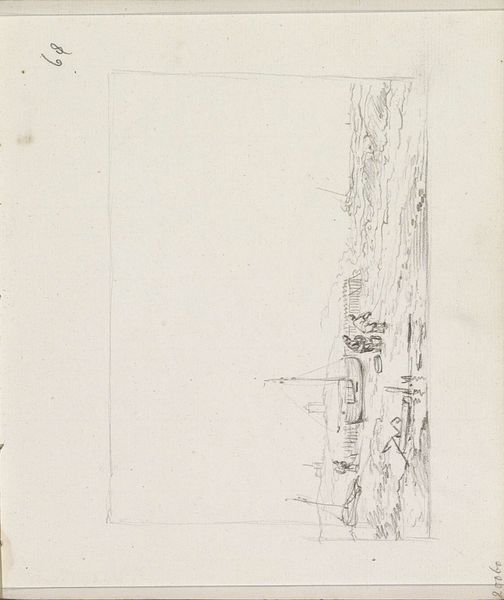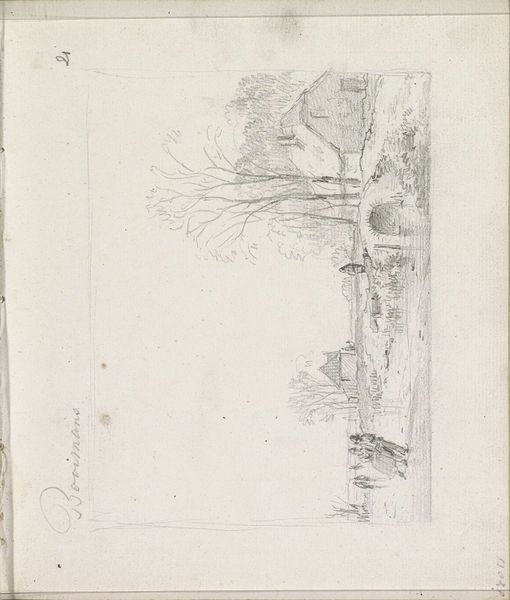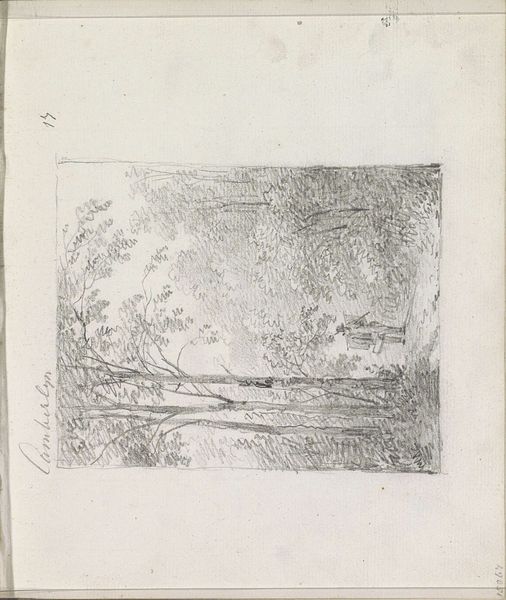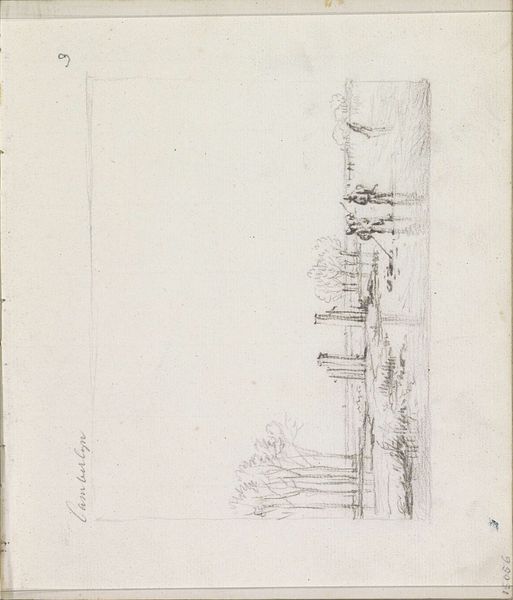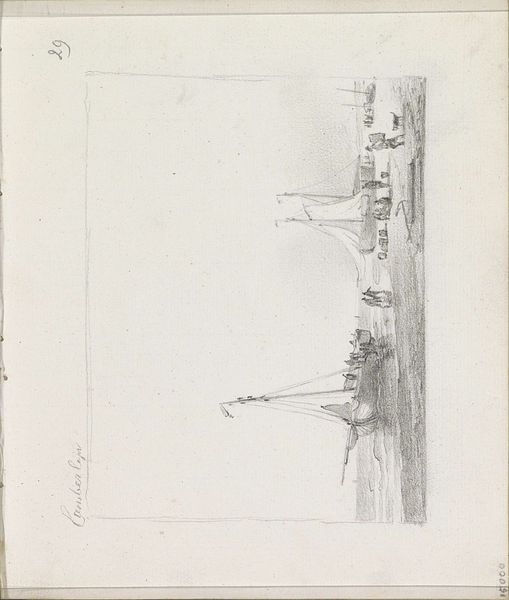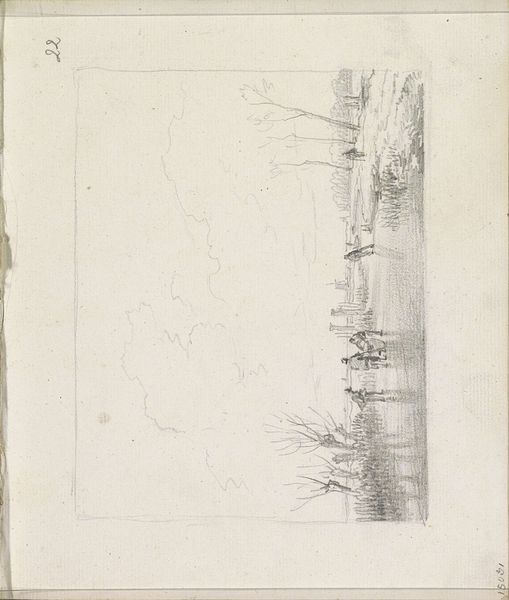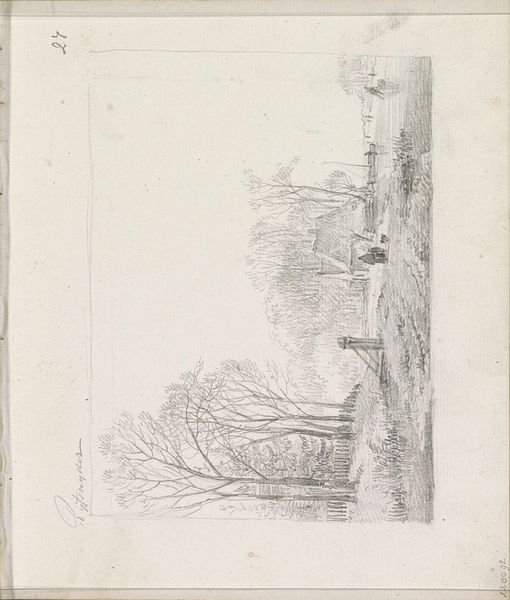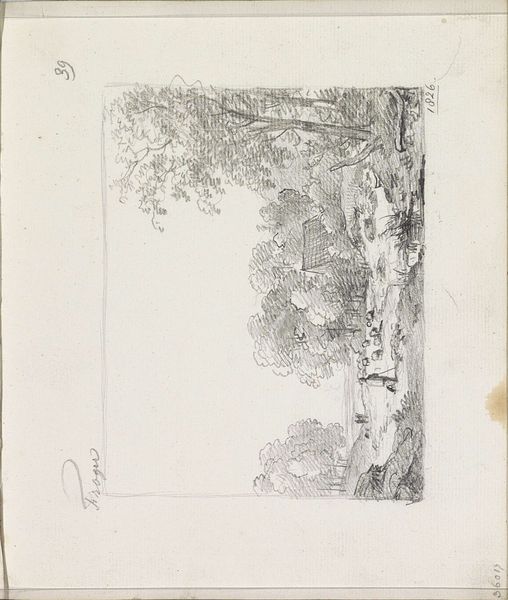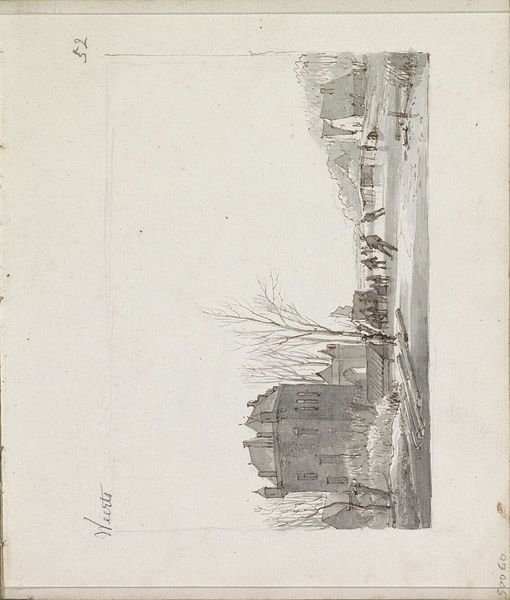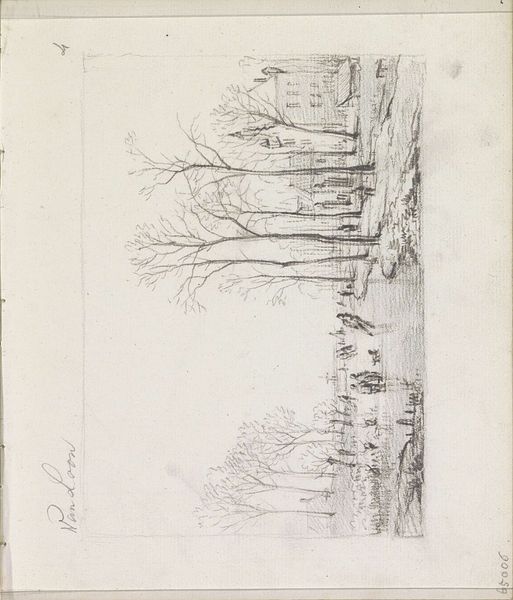
Winterlandschap met figuren op een bevroren vaart c. 1825 - 1829
0:00
0:00
andreasschelfhout
Rijksmuseum
drawing, pencil
#
drawing
#
landscape
#
etching
#
romanticism
#
pencil
#
realism
Copyright: Rijks Museum: Open Domain
Editor: We're looking at Andreas Schelfhout’s “Winter Landscape with Figures on a Frozen Canal,” dating from around 1825-1829. It’s a pencil drawing. I'm immediately struck by how spare it is, yet it captures the scene so effectively. What can you tell me about it? Curator: I see a drawing, a record of labor made visible through the graphite on paper. The rapid lines denote form but also denote the speed of production, suggestive of both capturing a fleeting moment and perhaps working quickly to fulfill market demand for such picturesque scenes. Note how the composition draws the eye across the flat, frozen plane – what does this linearity suggest to you? Editor: I suppose the lines emphasize the flatness and vastness, like an endless, usable space for work and leisure, I guess. So you’re thinking about this as a product of labor, rather than just artistic expression? Curator: Exactly. Look at the types of labour depicted: recreational skating as leisure activity enabled by industrial production that freezes the canals for use, for transportation. Consider the materiality of the ice, too – a resource harnessed through a collective understanding and manipulation of nature, an early anthropocene! It shows us the interweaving of natural resources, labour, and leisure in a developing market economy. What do you think Schelfhout, the artisan, thinks of all of this activity? Editor: I see what you mean. The drawing itself, being a fairly quick medium, almost embodies that sense of efficiency and practicality you’re describing, linking the artistic process to these broader economic shifts. I hadn't considered that relationship between material conditions and artistic creation before in such a direct way. Curator: And those very pencil lines create a valuable artifact for our modern day society. This helps us see the material and social history of the work, not just an aesthetic landscape to admire!
Comments
No comments
Be the first to comment and join the conversation on the ultimate creative platform.
